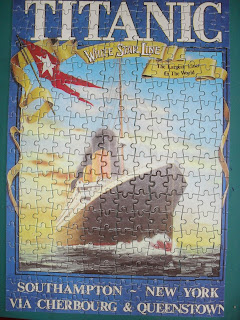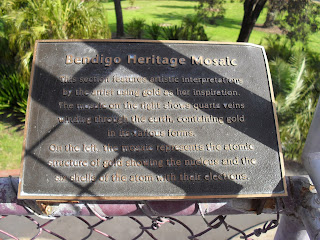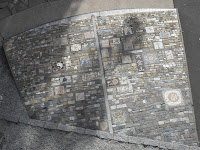"The Great Australian Jigsaw" is made up of 500 pieces and is obviously circular. This makes for some very interesting shapes in the pieces. It is 50 cm round when finished and I have now glued it to a board used for cake decorating. You can't see it here but there is actually one piece missing. I plan on getting creative with some textas or pencils to fill it in if I can't find it.
The artwork is by Australian artist Greg Gillespie.
This next jigsaw puzzle is only 250 pieces and the finished size is 41 x 28 cm. I bought this about 10 years ago when a travelling exhibition came to Bendigo. My daughter and I went to see it in the old town hall. It featured some actual memorabilia from the Titanic, stories about some of the people that sailed on it and costumes from the movie.
Talk again soon
Jeanette












